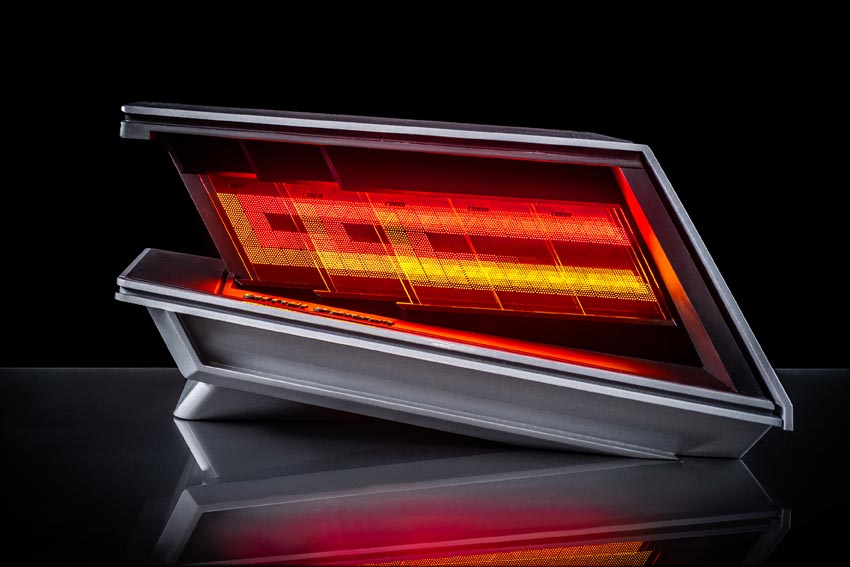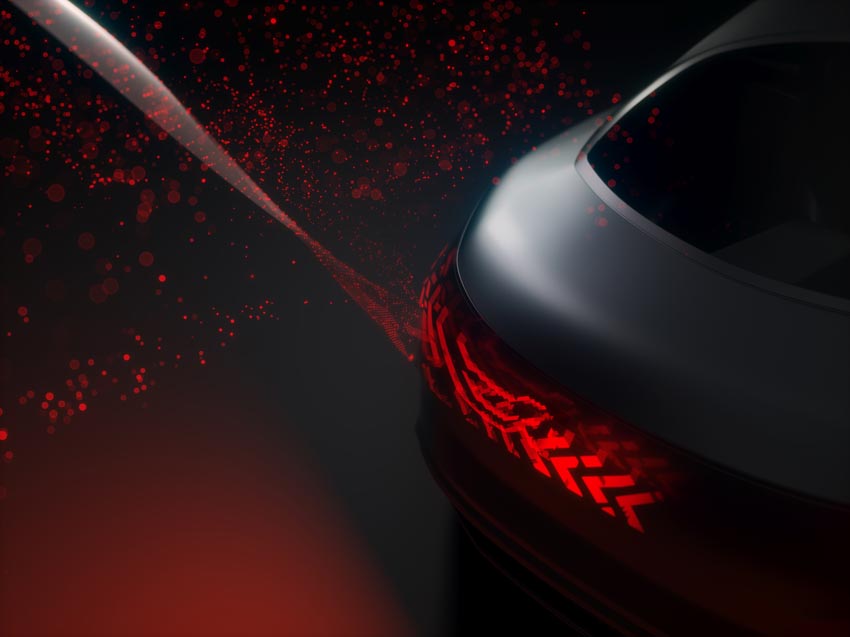ams OSRAM reveals the development of its ALIYOS™ LED-on-foil technology, which opens up all-new possibilities for design freedom and creativity in automotive lighting.

Using ALIYOS™ technology, car makers will be able to express brand personality through exterior and interior lighting in previously unattainable ways, as well as to introduce completely new three-dimensional lighting and animation effects for displaying dynamic individual messages and information signals to drivers and other road users.
Transparent, flexible, thin LED lighting
The ALIYOS™ technology enables ams OSRAM to apply mini-LEDs on a thin, flexible and transparent substrate. Connected by almost invisible metal traces, the mini-LEDs can be arranged with a large degree of freedom to form individually addressable segments of any shape. They can be positioned to perform standard lighting functions such as a stop light or turn indicator, but with unique, custom shapes and animation effects. The mini-LEDs can also be used to display symbols, words, images or abstract patterns for decoration, information, or warning.
Transparency, an outstanding feature of ALIYOS™ technology, in combination with mini-LEDs, means that light can appear out of nowhere. In addition, multiple foil assemblies can be placed one behind the other to create dramatic new 3D lighting and animation effects.
ams OSRAM is now working with the world’s leading automotive Tier One suppliers and OEMs to explore the new possibilities in automotive interior and exterior lighting. One demonstration design exploits the transparency of the ALIYOS™ foil substrate to produce new 3D effects in rear lights: a transparent array of three ALIYOS™ LED foils mounted one behind the other creates a sense of depth.

Another design shows that ALIYOS™ LED-on-foil technology can be applied to curved body panels, and is invisible when turned off, creating the effect of ‘Light out of nowhere’.
Thanks to the unique transparency, thinness and flexibility of ALIYOS™ technology, thousands of other new design possibilities are now open to car manufacturers. Legal requirements, for example UN Regulation No. 148 for the brightness of rear light and stop lights as well as turn indicators, can be met through the application of ALIYOS™ technology.
Industrialization of the technology has begun. The aim is to enable the first cars to be equipped with ALIYOS™ technology by the end of 2025, and to have achieved qualification for compliance with automotive quality and safety standards by this time.
